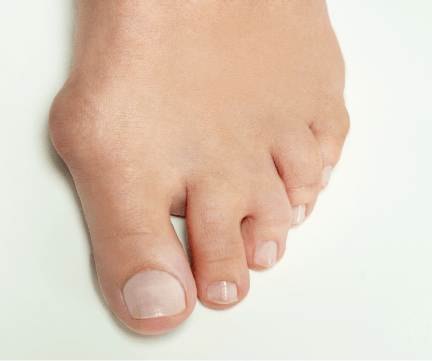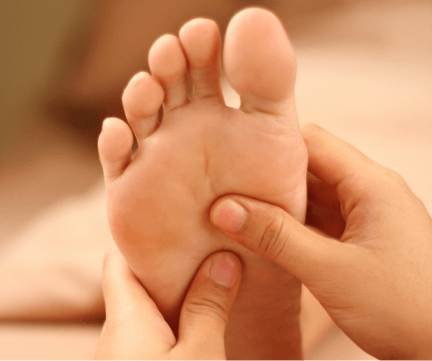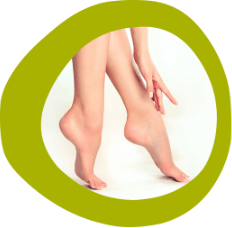12 Jan Bunion Treatment for Children
Bunion Treatment for Children


Bunions are a common foot condition that affects the big toe. They are often found in adults, but rates of bunions in children have increased recently. This increase is due to more cases of obesity, which can lead to weight-bearing pressure on the feet and toes. Bunions can cause pain and discomfort when walking or standing for long periods time, making it difficult for children to be active during their day at school or playtime with friends. In this article, we will discuss what causes bunions in children and how you should treat them if your child has one!
Are bunions common in children?
Bunions usually start to pop up at the age of 12 and can be found in up to 8% of the population in this bracket (depending on the study) and then usually goes up to as high as 30% of the population over the age of 30. We find that given that we see so many bunions in the clinic it’s not uncommon to see this in the adolescent population.
How early do bunions start to form?
Bunions are a common bony deformity that most often affects the big toe. A bunion is formed when one of the bones in the foot shifts or moves abnormally, causing it to push into another bone near it. The bunion then begins to form where these two bones meet. Bunions can start forming early on in life, sometimes as early as childhood! This article will answer questions like “How do bunions develop?”, “What are my treatment options?” and “How can I prevent them?”
Bunions often start forming in childhood and affect women more than men.
Two bony bumps form where the big toe joint meets the bone of the foot, creating a bunion when these bones shift abnormally. This can cause pain and discomfort, so it is important to take care of your feet at an early age! An early bunion diagnosis can prevent the bunion from worsening and becoming more painful.
There are many treatment options for bunions, depending on their severity.
How should I treat my child’s bunion?
There are a few things that you can do if your child is suffering from a bunion. First, make sure they are wearing comfortable shoes that do not put pressure on the big toe. You can also buy them special orthotic inserts to help redistribute the pressure and alleviate some of the pain. If the bunion is more severe, you may need to see a podiatrist for additional treatment. There are a few options that we can offer, but the best treatment is to prevent bunions from occurring in the first place!
Orthotics
Orthotics are a common treatment for children’s bunions. Orthotics are devices that fit over your child’s feet and help to correct the alignment of their feet and toes. Orthotics can be custom made or purchased over the counter. Whilst orthotics can be helpful, they unfortunately can have limited benefit due to the fact they don’t strengthen the muscles of the foot and only help while they are being worn.
Surgery
Surgery is another option for treating children’s bunions. Surgery involves correcting the deformity of your child’s foot by cutting the bone in the bunion. The risks of surgery include scarring, infection, and damage to other parts of your child’s feet. This is very rarely considered these days and would be considered extreme. Also, long term outcomes with surgery to early can be poor.
Foot Mobilisation
Foot mobilisation is a less invasive option that can help improve structural alignment of your child’s feet while reducing pain associated with bunions. Mobilisation involves using massage techniques on certain points within your child’s feet to improve the way their muscles contract which helps to reduce pain associated with bunions.
The benefits of foot mobilisation are
· strengthen the relevant muscles to a bunion
· works even if the child is barefoot
· can have good long term out come
· can help to avoid the need for surgery done the track
Is foot mobilisation a good option for treating children’s bunions?
Foot mobilisation therapy, or FMT, is a great option for treating children’s bunions. Foot mobilisation has been shown to reduce pain, increase range of motion in the foot, improve gait and decrease swelling. It also helps to correct alignment issues that may have occurred early on as they grow into adulthood. One question that many people ask themselves when considering treatment options for their child is: “is it better to start earlier?” The answer is yes! Children’s feet are more flexible than adults’, so this means we’re able to treat the alignment alignment issues much easier than if we were to wait until the child is fully grown. Not only will this help to correct any issues that have already arisen, but it can also help to prevent further problems from developing in the future!
The great news is that if you start conservative management early on a bunion you can in most cases avoid surgery. Whilst there is a time and a place for surgery it usually only needs to be considered in extreme cases.
At Sydney Bunion Clinic, we have over 19 years’ experience in treating bunion without surgery. The treatment consists of diagnosing the underlying cause and then going about improving the function of the foot and ankle. We do this through a hands-on technique that we combine with strengthening exercises that change the way you stand and walk and help improve the factors that lead to a bunion.
Whichever treatment you and your child decide is best, always make sure to consult with a podiatrist first. They will be able to assess your child’s feet and recommend the best treatment options for them.
Tags: Bunion Treatment Sydney

New Patient Bunion Assessment
Only $35* Usually $100
*Claimable on your private health insurance











Sorry, the comment form is closed at this time.